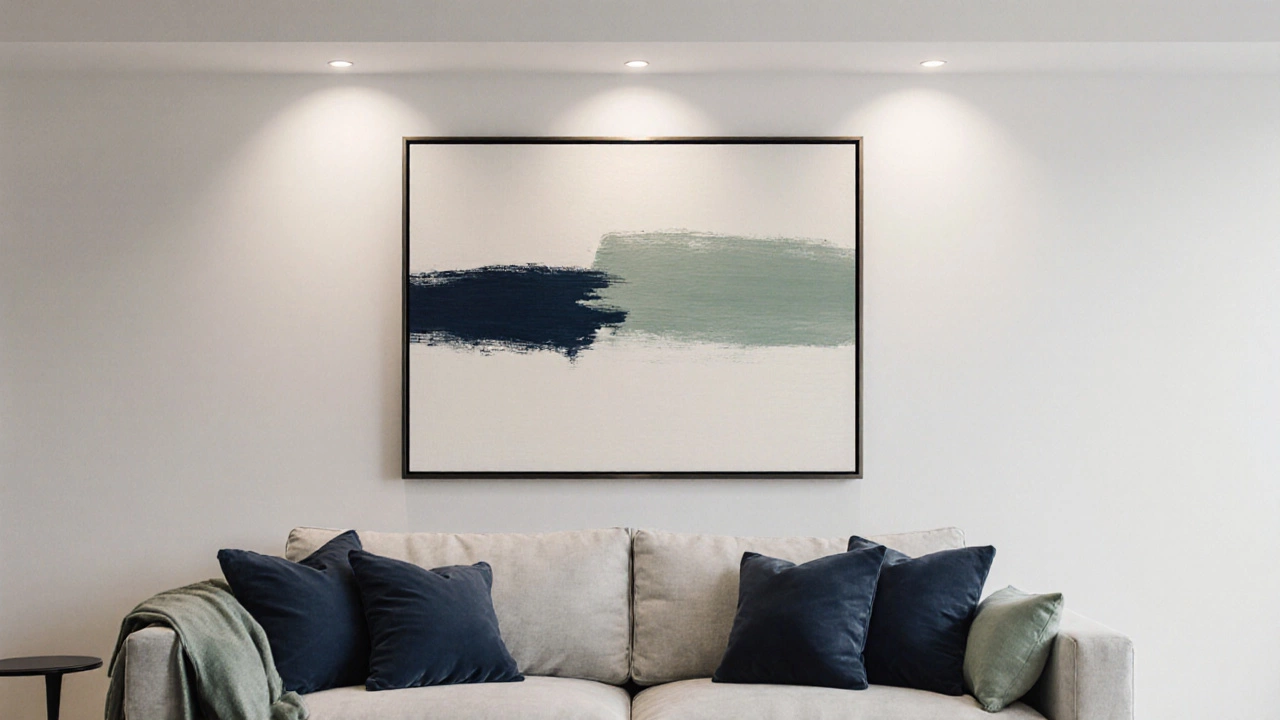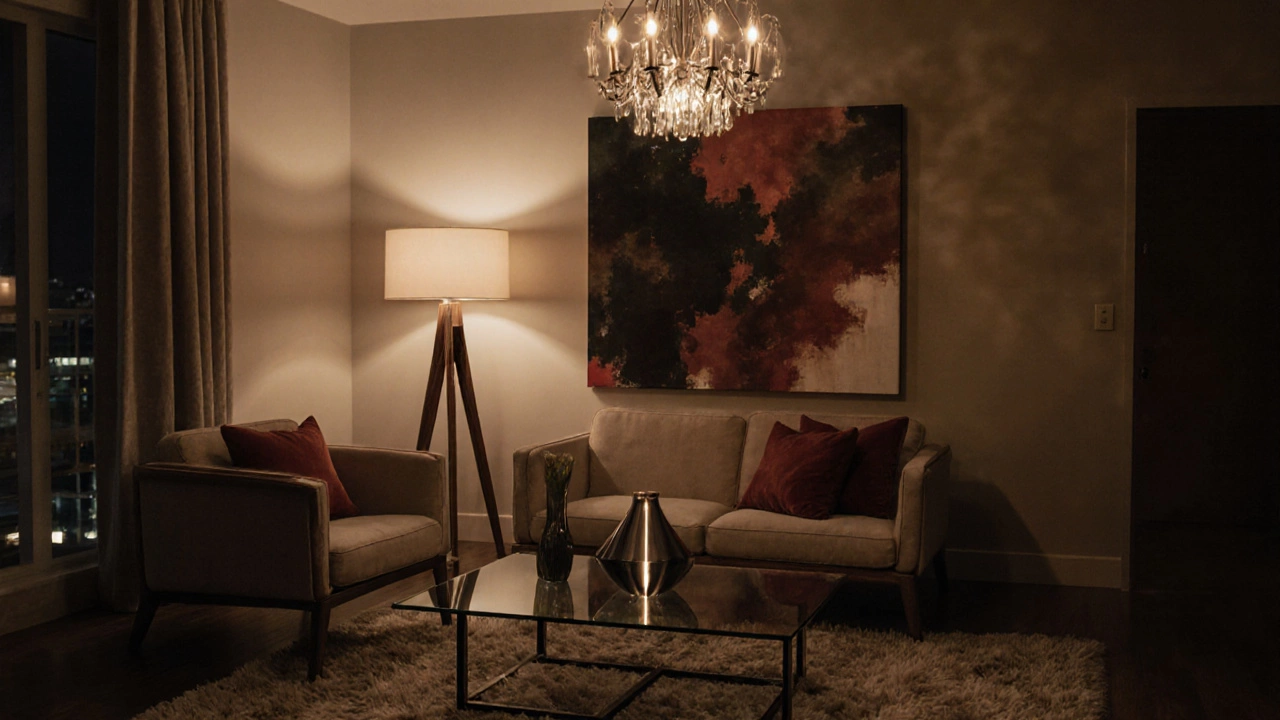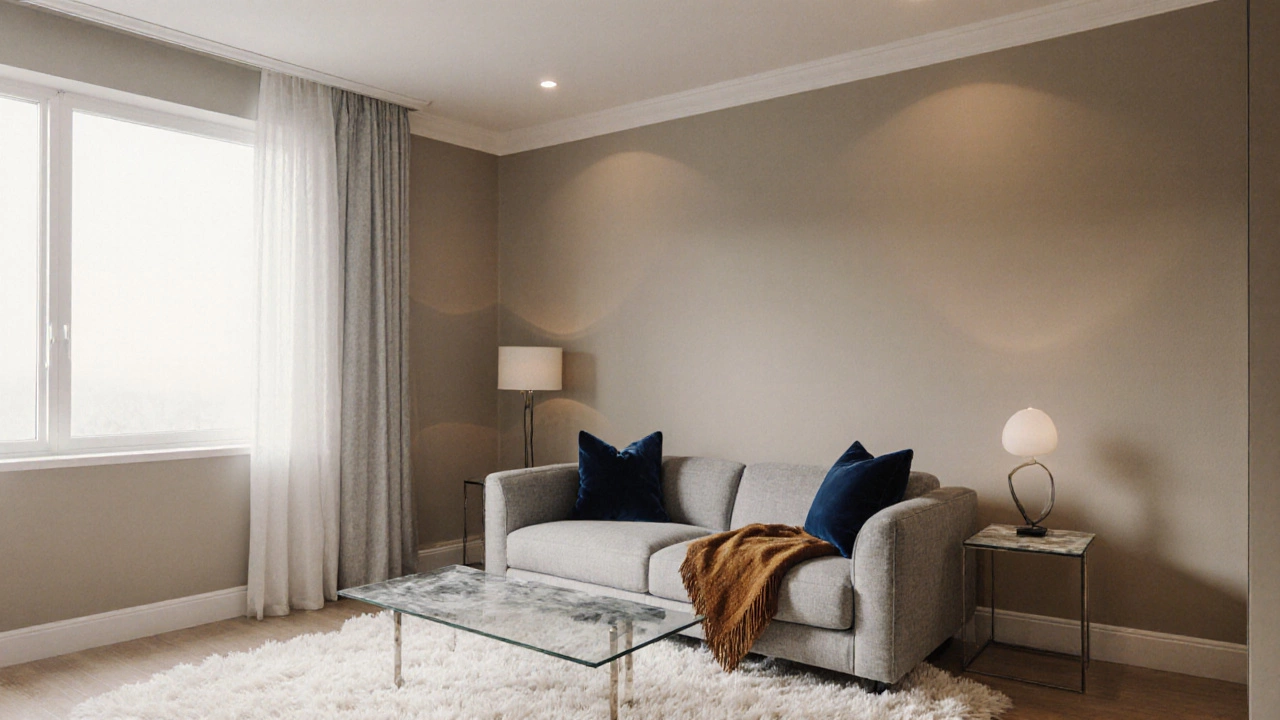Wall Art Sizing Calculator
Determine Your Ideal Wall Art Size
Based on the article's recommendation: art should be approximately two-thirds the width of your sofa. Perfect for creating a balanced, elegant look above your sofa.
Dreaming of a living room that feels upscale without breaking the bank? You don’t need a designer’s budget-just a clear plan, a few thoughtful pieces, and a dash of personal style. Below you’ll find a step‑by‑step roadmap that covers everything from colour choices to the perfect wall art, so you can transform your space into a classy retreat that impresses guests and feels cozy for everyday life.
Key Takeaways
- Start with a neutral base and add depth with layered textures.
- Pick wall art that reflects the room’s colour scheme and scale.
- Choose furniture with clean lines; mix in one statement piece.
- Layer lighting-ambient, task, and accent-for a polished glow.
- Finish with curated accessories that tie the look together.
What Makes a Living Room ‘Classy’?
A classy living room is a space that feels balanced, timeless, and effortlessly curated. It’s not about flashy trends; it’s about harmony between colour, texture, scale, and proportion. Think of it as an elegant melody-each element plays a specific note, and together they create a soothing composition.
Choose a Cohesive Colour Palette
Colour sets the mood. For a classy vibe, start with a neutral base-soft greys, warm taupes, or creamy whites. These shades provide a sophisticated canvas and make it easy to switch out accessories later. Add depth with two to three accent colours: muted navy, sage green, or deep rust work beautifully as accent walls, pillows, or art frames.
When testing paint, observe the hue at different times of day. The same colour can look bright in morning light and softer under evening lamps, ensuring the room stays inviting around the clock.

Select Wall Art That Elevates the Space
Wall art is the visual centerpiece of a classy living room. It should complement your palette, match the scale of your furniture, and reflect your personality without overwhelming the space.
Here are three rules to follow:
- Scale matters: The art piece should be roughly two‑thirds the width of the sofa it hangs above.
- Colour harmony: Choose pieces that echo at least one colour from your palette.
- Frame wisely: Thin metallic or simple wooden frames keep the look sleek.
Below is a quick comparison of popular wall‑art styles for a refined look.
| Style | Typical Colours | Best Frame | Ideal Placement |
|---|---|---|---|
| Abstract Minimalist | Monochrome or muted palette | Thin black or brushed metal | Above sofa or on a feature wall |
| Black‑and‑White Photography | Neutral tones | Simple white or walnut wood | Flanking a fireplace or centered on main wall |
| Canvas Landscape | Soft greens, blues, earth tones | No frame (stretched canvas) | Opposite the seating area for balance |
| Metal Wall Sculpture | Metallic finishes | Integrated metal, no extra frame | As a focal point on an accent wall |
When you’ve decided on a style, hang the piece at eye level-about 57‑60 inches from the floor-to keep the visual line comfortable.
Furniture Arrangement for Elegance
Furniture should feel purposeful yet relaxed. Choose pieces with clean, straight lines or gentle curves; avoid overly ornate detailing that competes with your wall art.
Start with a solid sofa as the anchor, then add a pair of sleek armchairs or a low-profile loveseat. A coffee table with a glass top or matte marble surface adds a subtle luxe without drawing attention away from the décor.
Leave enough circulation space-ideally 36‑42 inches-between pieces to maintain an airy feel. If the room feels cramped, consider removing a secondary console or swapping a bulky side table for a narrower version.
Lighting That Adds Sophistication
Layered lighting is the secret to a polished living room. Aim for three layers:
- Ambient: A ceiling fixture or recessed lights provide overall illumination. Choose a dimmable option to adjust the mood.
- Task: Table lamps or floor lamps beside seating areas allow reading without glare.
- Accent: Spotlights or LED strips highlight wall art and architectural features, adding depth.
Warm white LEDs (around 2700K) create a cozy ambience, while cooler tones (3500K) work well in spaces where you need more focus, such as a workspace nook in the living room.

Textiles & Accessories: The Finishing Touches
Textures bring softness and richness. Opt for a plush area rug in a muted colour that anchors the seating arrangement. Layer throw pillows in varied fabrics-silk, linen, velvet-to add tactile interest without clutter.
When picking accessories, less is more. Choose a few curated objects: a sculptural vase, a sleek metal clock, or a set of curated books. Each should have a purpose, whether functional or visual, and should echo the room’s colour scheme.
Quick Classy‑Living‑Room Checklist
- Neutral base colour applied to walls.
- Two‑to‑three accent colours integrated via pillows, art, or accessories.
- One statement wall art piece, correctly scaled and framed.
- Furniture with clean lines; sofa anchor, balanced side chairs.
- Layered lighting: ambient ceiling fixture, task lamps, accent spotlights.
- Plush rug, mixed‑texture throws, and a handful of coordinated accessories.
Run through this list before stepping back-you’ll see instantly whether anything feels out of place.
Frequently Asked Questions
How large should my wall art be for a standard sofa?
A good rule of thumb is to make the art about two‑thirds the width of the sofa. For a 90‑inch sofa, aim for a piece roughly 60‑65 inches wide.
Can I use bold colours and still keep the room classy?
Yes-use bold colours as accents rather than the main wall colour. A navy accent wall or a deep‑green velvet pillow can add drama without feeling loud.
What lighting temperature works best for a classy ambiance?
Warm white LEDs around 2700K create a soft, inviting glow. Use cooler light (3500K) only for specific task areas where you need sharper focus.
Should I match my rug colour to my sofa or wall art?
Ideally, the rug should pick up an accent colour from the room-often a hue found in your pillows or artwork-while staying neutral enough to blend with the sofa.
How many accessories are too many?
Aim for no more than three to five decorative objects on any surface. This keeps the space feeling curated rather than cluttered.
